 BMW R 1250 RT - Owner's Manual > Antilock Brake System (ABS)
BMW R 1250 RT - Owner's Manual > Antilock Brake System (ABS)
General instructions
To find out more about engineering go to: bmw-motorrad.com/technology
Antilock Brake System (ABS)
Partially integral brakes
Your motorcycle is equipped with partially integral brakes. Both front and rear brakes are applied when you pull the handbrake lever. The footbrake lever acts only on the rear brake.
When actively intervening in the braking process, BMW Motorrad Integral ABS adapts braking-force distribution between front and rear brakes to suit the load on the motorcycle ABS.
ATTENTION Attempted burn-out despite Integral braking function
Damage to rear brake and clutch
- Do not burn out tyres.
How does Integral ABS work?
The amount of braking force that can be transferred to the road depends on factors that include the coefficient of friction of the road surface. Loose stones, ice and snow or a wet road all have much lower coefficients of friction than a clean and dry asphalt surface.
The lower the coefficient of friction, the longer the braking distance.
If the rider increases braking pressure to the extent that braking force exceeds the maximum transferable limit, the wheels start to lock and the vehicle loses its directional stability; a fall is imminent.
Before this situation can occur, ABS intervenes and adapts braking pressure to the maximum transferable braking force. The wheels continue to turn and the driving stability is retained irrespective of the road condition.
What are the effects of surface irregularities?
Humps and surface irregularities can cause the wheels to lose contact temporarily with the road surface; if this happens the braking force that can be transmitted to the road can drop to zero. If the brakes are applied under these circumstances the ABS has to reduce braking force to ensure that directional stability is maintained when the wheels regain contact with the road surface. At this instant the BMW Motorrad Integral ABS must assume an extremely low coefficient of friction, so that the wheels will continue to rotate under all imaginable circumstances, because this is the precondition for ensuring directional stability.
As soon as is registers the actual circumstances, the system reacts instantly and adjusts braking force accordingly to achieve optimum braking.
What feedback does the rider receive from the Integral ABS?
If the ABS has to reduce braking force on account of the circumstances described above, vibration is perceptible through the handbrake lever.
When the handbrake lever is pulled, brake pressure is also built up at the rear wheel by the integral function. If the brake pedal is depressed after the handbrake lever is pulled, the brake pressure built up beforehand is perceptible as counter-pressure sooner than is the case when the brake pedal is depressed either before or at the same time as the brake lever is pulled.
Rear wheel lift
Under very severe and sudden deceleration, however, under certain circumstances it is possible that the BMW Motorrad Integral ABS will be unable to prevent the rear wheel from lifting clear of the ground. If this happens the outcome can be a highsiding situation in which the motorcycle can flip over.
WARNING Rear wheel lift due to severe braking
Risk of falling
- When you brake sharply, bear in mind that ABS control cannot always be relied on to prevent the rear wheel from lifting clear of the ground.
What is the design baseline for Integral ABS?
Within the limits imposed by physics, the BMW Motorrad Integral ABS ensures directional stability on any surface. The system is not optimised for special requirements that apply under extreme competitive situations off-road or on the track. The driving behaviour should be adapted to actual driving skills and the road conditions.
Special situations
The speeds of the front and rear wheels are compared as one means of detecting a wheel's incipient tendency to lock. If the system registers implausible values for a lengthy period the ABS function is deactivated for safety reasons and an ABS fault message is issued. Self-diagnosis has to complete before fault messages can be issued.
In addition to problems with the BMW Motorrad ABS, exceptional riding conditions can also cause a fault message to be issued:
- Heating up with the motorcycle on the centre stand or an auxiliary stand, engine idling or with a gear engaged.
- Rear wheel locked by the engine brake for a lengthy period, for example while descending on a loose or slippery surface.
If a fault message is issued on account of exceptional riding conditions, you can reactivate the ABS function by switching the ignition off and on again.
What significance devolves on regular maintenance?
WARNING Brake system not regularly serviced.
Risk of accident
- In order to ensure that the ABS is always maintained in optimum condition, it is essential for you to comply strictly with the specified inspection intervals.
Reserves for safety
The potentially shorter braking distances which BMW Motorrad Integral ABS permits must not be used as an excuse for careless riding. ABS is primarily a means of ensuring a safety margin in genuine emergencies.
WARNING Braking when cornering
Risk of accident despite ABS
- Invariably, the rider bears responsibility for assessing road and traffic conditions and adopting his or her style of riding accordingly.
- Do not take risks that would negate the additional margin of safety offered by this system.
Evolution of ABS to ABS Pro
Until now, the BMW Motorrad ABS helped ensure a very high degree of safety for braking with the motorcycle upright and travelling in a straight line.
Now ABS Pro offers enhanced safety for braking in corners as well. ABS Pro prevents the wheels from locking even under sharp braking. ABS Pro reduces abrupt changes in steering force, particularly in panicbraking situations, counteracting the vehicle's otherwise natural but undesirable tendency to straighten up.
ABS intervention
Technically speaking, depending on the riding situation ABS Pro adapts ABS intervention to the motorcycle's bank angle. Signals for rate of roll and rate of yaw and lateral acceleration are used to calculate bank angle.
As the motorcycle is heeled over more and more as it banks into a corner, an increasingly strict limit is imposed on the brakepressure gradient for the start of brake application. This slows the build-up of brake pressure to a corresponding degree. Additionally, pressure modulation is more uniform across the range of ABS intervention.
Advantages for the rider
The advantages of ABS Pro for the rider are sensitive response and high braking and directional stability combined with best-case deceleration of the motorcycle, even when cornering.
See also:
 BMW R 1250 RT - Owner's Manual > Traction control (ASC/DTC)
BMW R 1250 RT - Owner's Manual > Traction control (ASC/DTC)
How does ASC/DTC work? BMW Motorrad ASC/DTC compares the wheel speeds at the front and rear wheel. The differential is used to compute slip as a measure of the reserves of stability available at the rear wheel.
 BMW R 1250 RT
BMW R 1250 RT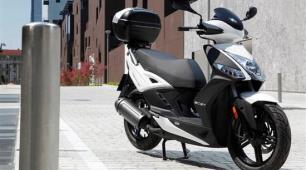 Kymco Agility 50
Kymco Agility 50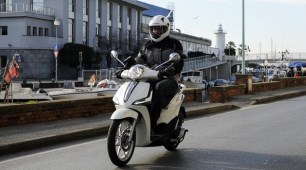 Piaggio Liberty 50
Piaggio Liberty 50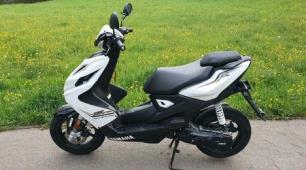 Yamaha aerox NS50
Yamaha aerox NS50 Aprilia SR50R
Aprilia SR50R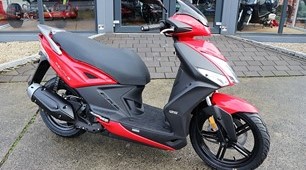 Kymco Agility 50
Kymco Agility 50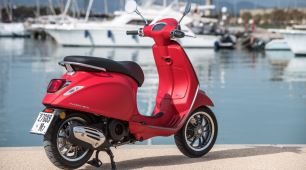 Vespa Primavera 50
Vespa Primavera 50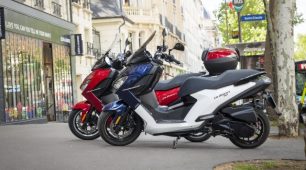 Peugeot Speedfight
Peugeot Speedfight